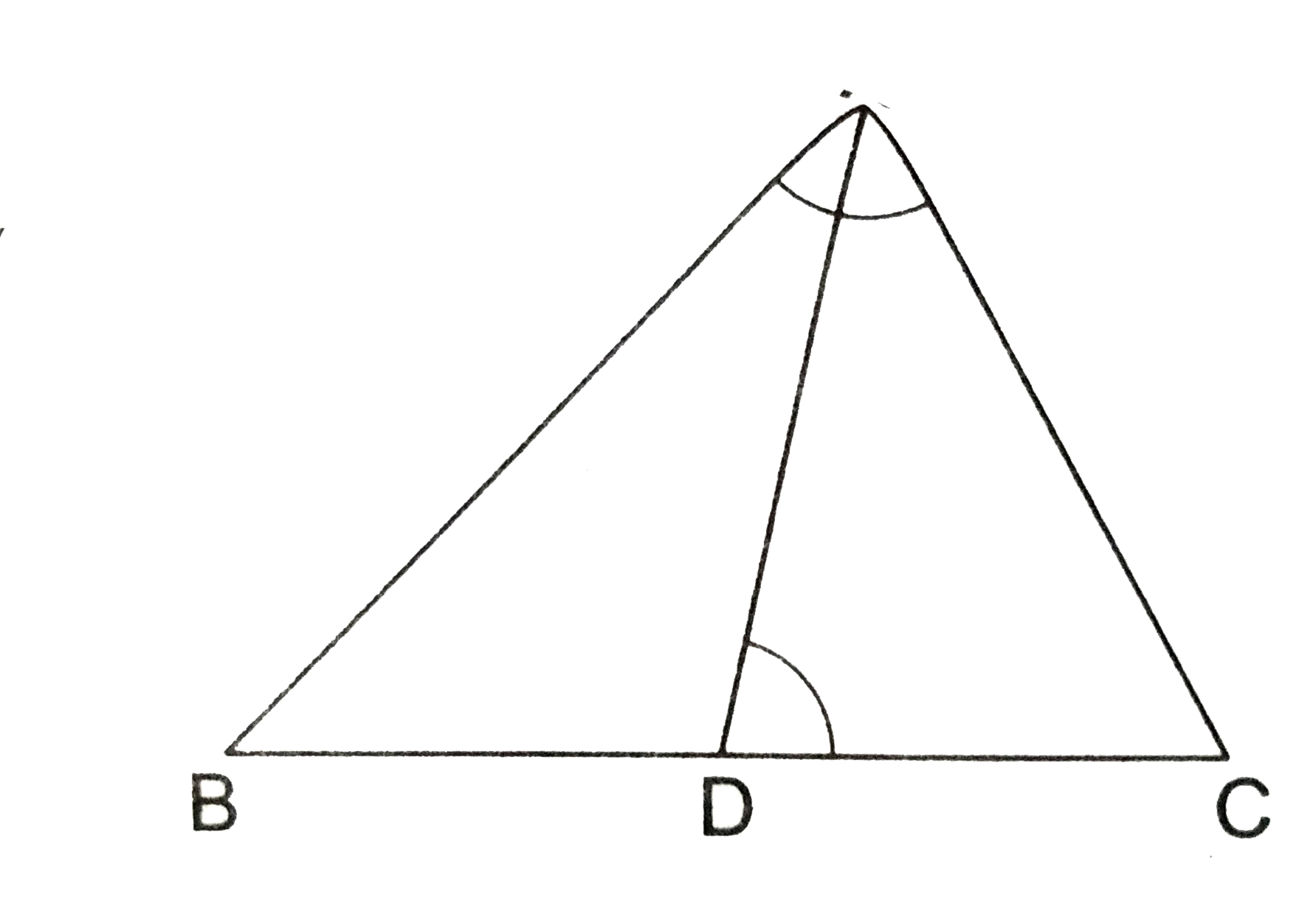Let O be the in-centre of a triangle ABC and D be a point on the side BC of ΔABC, such that OD⊥BC If ∠BOD=15∘, then ∠ABC=?
The correct Answer is:150∘
To solve the problem, we need to determine the angle ABC given the conditions provided. Let's break down the solution step by step.
1. Identify the Incenter and Given Angles:
- Let O be the incenter of triangle ABC.
- We know that OD is perpendicular to BC, which means angle ODB = 90°.
- We are given that angle BOD = 15°.
2. Calculate Angle AOD:
- In triangle BOD, we can find angle AOD using the fact that the sum of angles in a triangle is 180°.
- We have:
Angle BOD+Angle ODB+Angle AOD=180°
- Substituting the known values:
15°+90°+Angle AOD=180°
- Simplifying this gives:
Angle AOD=180°−105°=75°
3. Relate Angle AOD to Angle ABC:
- Since O is the incenter, angle AOD is equal to half of angle ACB (because the angle bisector divides the angle into two equal parts).
- Therefore, we have:
Angle ACB=2×Angle AOD=2×75°=150°
4. Use the Triangle Angle Sum Property:
- In triangle ABC, the sum of the angles is 180°:
Angle A+Angle B+Angle C=180°
- We know angle C (which is angle ACB) is 150°, so:
Angle A+Angle B+150°=180°
- This simplifies to:
Angle A+Angle B=30°
5. Determine Angle ABC:
- Since angle A and angle B are supplementary to angle C, we can express angle B in terms of angle A:
Angle B=30°−Angle A
- However, we need to find the specific value of angle ABC. We can assume that angle A is equal to angle B for simplicity in this case (as the problem does not specify otherwise).
- Thus, we can set:
2×Angle B=30°
- This gives:
Angle B=15°
Final Answer:
Thus, the angle ABC is 15°.
- Let O be the incenter of triangle ABC.
- We know that OD is perpendicular to BC, which means angle ODB = 90°.
- We are given that angle BOD = 15°.
- In triangle BOD, we can find angle AOD using the fact that the sum of angles in a triangle is 180°.
- We have:
Angle BOD+Angle ODB+Angle AOD=180°
- Substituting the known values:
15°+90°+Angle AOD=180°
- Simplifying this gives:
Angle AOD=180°−105°=75°
- Since O is the incenter, angle AOD is equal to half of angle ACB (because the angle bisector divides the angle into two equal parts).
- Therefore, we have:
Angle ACB=2×Angle AOD=2×75°=150°
- In triangle ABC, the sum of the angles is 180°:
Angle A+Angle B+Angle C=180°
- We know angle C (which is angle ACB) is 150°, so:
Angle A+Angle B+150°=180°
- This simplifies to:
Angle A+Angle B=30°
- Since angle A and angle B are supplementary to angle C, we can express angle B in terms of angle A:
Angle B=30°−Angle A
- However, we need to find the specific value of angle ABC. We can assume that angle A is equal to angle B for simplicity in this case (as the problem does not specify otherwise).
- Thus, we can set:
2×Angle B=30°
- This gives:
Angle B=15°
Thus, the angle ABC is 15°.
Topper's Solved these Questions
Similar Questions
Knowledge Check
- Question 1 - Select One
Let O be the in-centre of a triangle ABC and D be a point on the side BC of ΔABC, such that OD⊥BC If ∠BOD=15∘, then ∠ABC=?
A75∘B45∘C150∘D90∘ - Question 2 - Select One
If D is a Point on the side BC of a ΔABC such that AD bisects ∠BAC. Then
ABD=CDBBA>BDCBD>BADCD<CA - Question 3 - Select One
Let 'l' is the length of median from the vertex A to the side BC of a ΔABC. Then
A4l2=2b2+2c2−a2B4l2=b2+c2+2bccosAC4l2=a2+4bccosAD4l2=(2s−a)2sin2A2
ABC is a triangle and D is a point on the side BC. If BC = 12 cm, BD = 9 cm and ∠ADC=∠BAC, then the length of AC is equal to
View SolutionIn ΔABC,AC=BC and ∠BAC=70∘. Find ∠BCA
View SolutionIf ABC is an equilateral triangle and D is a point on BC such that AD⊥BC, then
View SolutionLet H be the orthocentre of triangle ABC. Then angle subtended by side BC at the centre of incircle of ΔCHB is
View SolutionFrom the circumcentre O of traingle ABC , perpendicular OD is drawn on BC.If angle BAC =60 , Then the value of angle BOD
View Solution


